
 Although known for movies with overgrown critters (i.e. Empire of the Ants, Food of the Gods, Earth vs. the Spider and so many more), writer/director/producer Bert I. Gordon flirted with reality — comparatively, at least — in 1973’s The Mad Bomber.
Although known for movies with overgrown critters (i.e. Empire of the Ants, Food of the Gods, Earth vs. the Spider and so many more), writer/director/producer Bert I. Gordon flirted with reality — comparatively, at least — in 1973’s The Mad Bomber.
Also known by the nonsensical and inaccurate title of The Police Connection, the film casts Chuck Connors (Tourist Trap) as William Dorn, a bespectacled man with a strong moral code when it comes to keeping the city clean, showing respect for others and honoring sales in grocery circulars, yet has no problem blowing innocent strangers to kibbles and bits with his homemade bombs of dynamite sticks and alarm clocks. Placed into unassuming brown bags and dropped off at such locales as a high school, a mental hospital and a women’s lib meeting (!), the contraptions wreak terror throughout L.A.
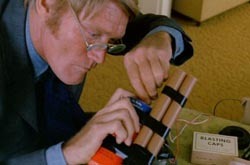 At that middle spot, Dorn unknowingly gains an eyewitness to his crimes: serial rapist George Fromley (Neville Brand, Eaten Alive), whose M.O. is taping shut the mouths of his victims, then ripping off their tops to let their breasts fly free. For Lt. Minneli (Vince Edwards, Cellar Dweller), the key to identifying the bomber is nabbing Fromley. Pleads the lieutenant to the police chief, “Let me blanket the city with policewomen just asking to be raped! I’ll bring him in!” (Cue a montage of handsy, horny men going hormonally insane on various ladies strutting their stuff in the dead of night.)
At that middle spot, Dorn unknowingly gains an eyewitness to his crimes: serial rapist George Fromley (Neville Brand, Eaten Alive), whose M.O. is taping shut the mouths of his victims, then ripping off their tops to let their breasts fly free. For Lt. Minneli (Vince Edwards, Cellar Dweller), the key to identifying the bomber is nabbing Fromley. Pleads the lieutenant to the police chief, “Let me blanket the city with policewomen just asking to be raped! I’ll bring him in!” (Cue a montage of handsy, horny men going hormonally insane on various ladies strutting their stuff in the dead of night.)
Even with such cuckoo elements as Dorn trying to kill Minneli with a sidecar-equipped motorcycle, and Fromley masturbating to nudie loops of his own wife, The Mad Bomber is played more or less straight, especially by Gordon’s unrestrained standards. Its mix of crime-story grit and exploitation-film sleaze works exceedingly well on such low expectations. Yep, it’s dynamite. —Rod Lott


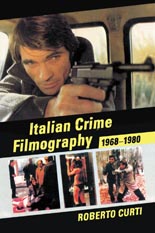
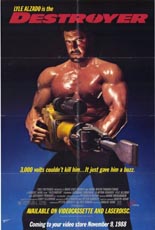
 Had Wes Craven cast Lyle Alzado as Freddy Krueger instead of Robert Englund, the result might look a lot like
Had Wes Craven cast Lyle Alzado as Freddy Krueger instead of Robert Englund, the result might look a lot like 
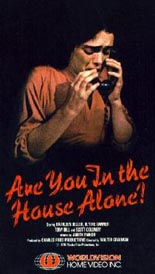
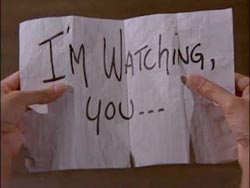
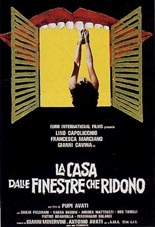
 Twenty years after the death of tortured painter Legnani (Tonino Corazzari,
Twenty years after the death of tortured painter Legnani (Tonino Corazzari, 